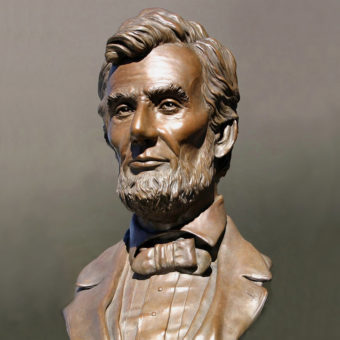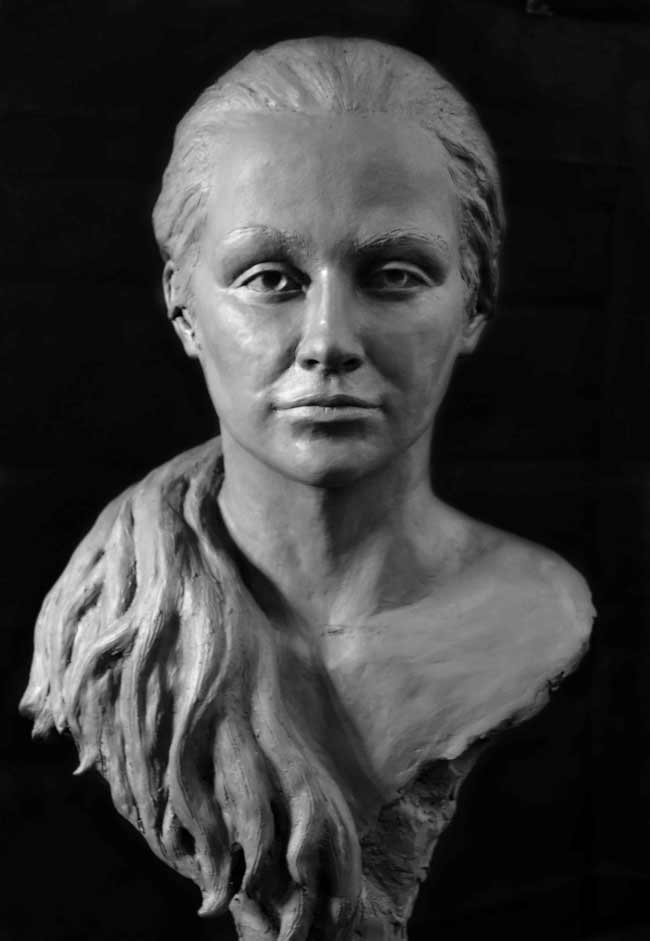Beyond Boundaries: Contemporary Sculptures Redefining Perspectives
Wiki Article
Sculpting the Human Kind: Representations of the Body in Sculpture
Sculpting the Human Kind: Portrayals of the Body in Sculpture is a thorough expedition of the artistic representation of the human body throughout background. This exhibit dives into the numerous methods, styles, and social perspectives that have formed the method musicians have portrayed the human kind in sculpture. From the splendid marble sculptures of old Greece to the detailed work of arts of the Renaissance, from the flamboyant and luxuriant Baroque and Rococo sculptures to the progressive and abstract expressions of modern and modern sculpture, this exhibit uses a captivating trip through the advancement of this ageless art kind - Robert C Hitchcock Sculptor. By taking a look at the varied analyses and depictions of the body, visitors will gain a deeper understanding of the imaginative, cultural, and social influences that have shaped our assumption of the human type.Ancient Greek Sculptures

Among the specifying qualities of Old Greek sculptures is their focus on balance. Each part of the body is meticulously crafted to be symmetrical to the entire, creating a feeling of balance and consistency. The artists paid mindful focus to every information, from the positioning of muscle mass to the positioning of arm or legs, guaranteeing that each figure showed up both effective and stylish.
Rather than depicting the flaws and imperfections of the human type, they sought to develop an idyllic version of fact. The sculptures commonly represented goddesses, gods, and professional athletes, with their bodies sculpted to excellence.
Renaissance Masterpieces
Continuing the exploration of the representation of the human form in sculpture, Renaissance work of arts additionally fine-tune the idyllic idea of appeal, structure upon the in proportion and unified proportions of their Old Greek precursors. During the Renaissance duration, which extended from the 14th to the 17th century in Europe, artists looked for to restore the classical ideals of ancient Greece and Rome. They studied and copied the works of the ancient masters, pursuing a practical depiction of the body.
One of one of the most distinguished Renaissance sculptors was Michelangelo Buonarroti. His work of art, the sculpture of David, exhibits the excellence and grace that became identified with Renaissance art. Standing at over 17 feet tall, the sculpture depicts the scriptural hero in a state of calm prior to his battle with Goliath. David's muscle body, caught with extraordinary detail, discloses the artist's proficiency of human anatomy.
Another noteworthy Renaissance carver was Donatello. His sculpture of Saint George, created in the early 15th century, showcases the musician's ability to communicate stamina and the aristocracy via the human kind. The statuary illustrates the legendary dragon-slaying saint in a poised and positive stance, radiating a feeling of heroism.
Renaissance masterpieces not just celebrated the physical beauty of the body but additionally shared deeper definitions and feelings. Through their meticulous attention to information and knowledgeable craftsmanship, Renaissance artists boosted the art of sculpture to new heights, leaving a long lasting heritage that remains to motivate artists to this particular day.
Rococo and baroque Sculpture
Baroque and Rococo sculpture exhibits the ornate and extravagant portrayal of the human type during the 17th and 18th centuries. Defined by its dramatic and vibrant style, Baroque sculpture aimed to mesmerize visitors via its magnificence and psychological strength. Musicians such as Gian Lorenzo Bernini and Alessandro Algardi produced sculptures that shared activity, commonly showing numbers in remarkable presents. Using light and darkness better improved the sense of dramatization, creating a theatrical impact.
Rococo sculpture, on the other hand, emerged as a response to the grandiosity of the Baroque period. It welcomed a much more delicate and spirited technique, focusing on ornamental details and detailed designs. François Boucher and Jean-Baptiste Pigalle were popular Rococo carvers who crafted jobs defined by their beauty and charm. They commonly depicted numbers in graceful and sensual positions, showing the lighthearted and whimsical nature of the Rococo design.
Both Rococo and baroque sculpture put a wonderful emphasis on the human form, commemorating its elegance and sharing a series of emotions - Equine Sculptures. Whether it was the dynamic and effective figures of the Baroque or the graceful and enchanting figures of the Rococo, these sculptures recorded the significance of the human experience, leaving an enduring impact on the art world
Modern and Contemporary Sculpture
The evolution of sculpting the human form proceeds in modern and modern-day sculpture. With the development of brand-new products and techniques, musicians have actually pushed the borders of representation, testing typical concepts of kind and elegance. Modern sculpture Click This Link arised in the late 19th century as a response to the transforming political and social landscape. Musicians such as Auguste Rodin and Constantin Brancusi looked for to capture the essence of the human form, highlighting emotion and motion. Rodin's "The Thinker" and Brancusi's "Bird precede" are renowned examples of this period.In the 20th century, the rise of abstraction and conceptual art brought brand-new possibilities for sculptors. Musicians like Henry Moore and Barbara Hepworth discovered the connection in between kind and room, developing abstracted and organic figures that challenged traditional concepts of depiction. Moore's huge bronze sculptures and Hepworth's carved rock jobs are commemorated for their cutting-edge use materials and their ability to stimulate a feeling of the human body in a non-literal way.
Contemporary sculpture proceeds to press the boundaries of representation and check out new materials and strategies. Musicians like Antony Gormley and Ron Mueck create hyper-realistic sculptures that challenge our assumption of the body, while others, such as Louise Bourgeois and Kiki Smith, make use of the body as an allegory for individual and collective experiences. The human type remains an effective subject in sculpture, providing a system for artists to explore identity, feeling, and the human condition.
Social Point Of Views on the Human Body

In the exploration of shaping the human form, the assessment of social viewpoints on the human body reveals a abundant and diverse tapestry of depictions and analyses. Throughout history, various cultures have held unique ideas and values concerning the human body, causing unique imaginative expressions - Robert C Hitchcock Sculptor. These cultural perspectives form the way the body is depicted and viewed in sculpture, reflecting societal standards, faiths, and aesthetic perfects
For circumstances, ancient Greek sculptures celebrated the idyllic human form, emphasizing physical elegance and athleticism. In contrast, ancient Egyptian sculptures focused on the conservation of the body in the immortality, illustrating numbers with idealized attributes and rigid poses.
Similarly, cultural point of views on the human body in African art commonly highlight common identity and spiritual ideas (Equine Sculptures). Sculptures from various African cultures portray the body with exaggerated attributes, signifying social values and genealogical links. Native cultures in the Americas additionally have special viewpoints on the body, typically portraying it in a spiritual context and highlighting the link between human beings and nature
The examination of cultural perspectives on the body in sculpture allows us to acquire insight right into the values, beliefs, and appearances of different cultures throughout background. It highlights the diversity of human experiences and the methods which art mirrors and forms our understanding of the human form.

Final Thought
To conclude, the representation of the human body in sculpture has actually evolved in time, reflecting various imaginative motions and social viewpoints. From the idealized numbers of Ancient Greek sculptures to the reasonable and emotive Renaissance work of arts, and the intricate details of Baroque and Rococo sculptures, to the abstract and experimental forms of contemporary and contemporary sculpture. The human body has actually been a subject of attraction and imaginative exploration throughout background, showcasing the varied analyses and expressions of the human form.Shaping the Human Form: Representations of the Body in Sculpture is a detailed exploration of the creative representation of the human body throughout history. From the exquisite marble sculptures of old Greece to the complex masterpieces of the Renaissance, from the flamboyant and luxuriant Baroque and Rococo sculptures to the avant-garde and abstract expressions of modern and modern sculpture, this exhibit uses an exciting journey with the development of this classic art form. Artists like Antony Gormley and Ron Mueck create hyper-realistic sculptures that test our assumption of the human body, while others, such as Louise Bourgeois and Kiki Smith, utilize the body as an allegory for individual and cumulative experiences. The human form remains a powerful topic in sculpture, giving a system for artists to discover identification, emotion, and the human problem.
From the idyllic numbers of Ancient Greek sculptures to the stirring and sensible Renaissance masterpieces, and the complex information of Baroque and Rococo sculptures, to the abstract and experimental forms of modern-day and contemporary sculpture.
Report this wiki page